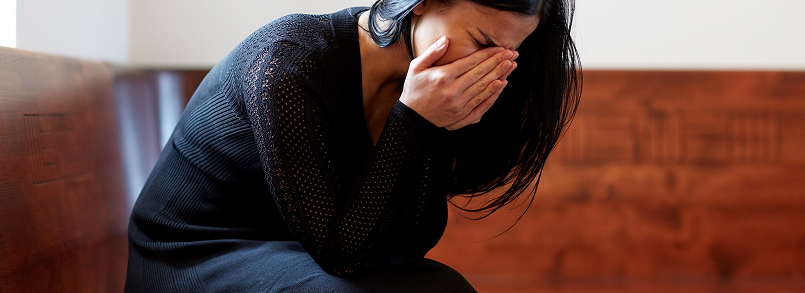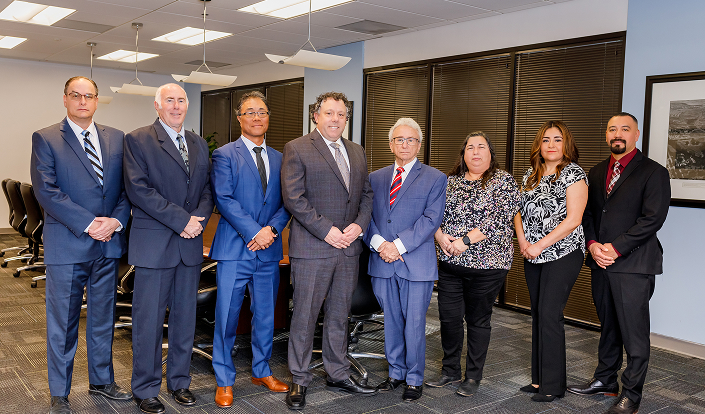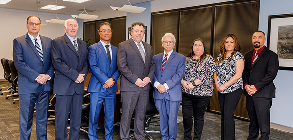
Losing a loved one is one of the most difficult things you can experience in life. The loss can be even more tragic when the death was the result of someone else’s negligence or wrongdoing. Aside from the emotional pain of loss, you may have also lost critical financial support and guidance. If your family member or loved one died due to another’s actions, you may have grounds to file a wrongful death lawsuit.
The attorneys at Carcione, Henderson & Markowitz, LLP, can help you seek financial restitution for your loved one’s death. With over 40 years of experience working with clients in San Mateo County, we have the skills and tenacity to see your case through. We cannot turn back the clock and return your loved one, but we can pursue financial compensation for the loss and suffering you have unfairly experienced.
Contact us today for a free, no-obligation consultation with a San Mateo wrongful death attorney.
How Can a San Mateo Wrongful Death Attorney Help Me and My Family?
The aftermath of the death of a loved one is an intense period of grief, pain, and uncertainty. You feel your loved one’s absence every day, and life may never feel completely right again. In addition to the suffering, bills can start to pile up, especially if your loved one was the primary income earner of your household. Navigating these challenges alone can seem insurmountable, but help is available.
CHM Law Firm has extensive experience pursuing wrongful death claims and will use every strategy to secure a favorable outcome. We have secured tens of millions of dollars for our clients for wrongful deaths from auto accidents, violent altercations, unsafe property conditions, and more.
Our California wrongful death lawyers are equipped with the following:
- Legal Knowledge – We have in-depth knowledge of wrongful death statutes and case law, which we can apply to your circumstances.
- Investigation Abilities – We prioritize evidence collection in the initial steps of your case and approach investigations from all angles to build a strong claim for legal damages.
- Negotiating Skills – We are skilled at dealing with large insurance companies and will stand firm in negotiations if they try to underpay or delay payments.
- Litigation Experience – If we cannot reach a mutual agreement, we can represent you in a formal lawsuit to present a compelling case that justifies the compensation you are owed.
We understand that no amount of money can replace your loved one. But a San Mateo wrongful death lawyer can pursue justice and some modicum of closure, giving you space to heal and move forward.
What Compensation Could I Recover in a Wrongful Death Claim?
A wrongful death claim is meant to recover compensation for any losses the deceased’s surviving heirs experienced. According to the Judicial Council of California Jury Instructions (CACI), damages in wrongful death claims fall into two types.
Economic damages include compensation for the following:
- Loss of the deceased’s financial support and future earnings
- Loss of gifts and benefits the deceased would have provided
- Funeral and burial expenses
- Lost value of household services that the deceased would have provided
The other type is noneconomic damages. Noneconomic damages are compensation for the following:
- Loss of the deceased’s love, support, companionship, or affection
- Loss of enjoyment of sexual relations
- Loss of the deceased’s training or guidance
Notably, juries do not consider the degree of the survivor’s grief, sorrow, mental anguish, or wealth when deciding wrongful death compensation.
How Are Wrongful Death Settlements Paid Out?
A common question we receive is: How are wrongful death settlements paid out? If a case settles or receives a favorable trial verdict, the beneficiaries can decide who gets the money. If they cannot reach an agreement, the courts will step in and decide how the compensation will be divided among the wrongful death beneficiaries in California.
Although courts generally favor equal distributions between eligible parties, they will consider factors such as the beneficiaries’ finances and relationship to the deceased. The goal is to provide a fair distribution that addresses each beneficiary’s financial need and degree of loss.
The actual money from a wrongful death claim can be paid out in two ways: a lump sum or a structured settlement. In a lump sum, the beneficiaries receive all the money at once in a single payment. With a structured settlement, the money is distributed in a series of payments over a set period.
Both types of payment arrangements have their pros and cons, and our wrongful death law firm can help you decide which is a better option for your situation.
What Must I Prove in a Wrongful Death Case?
To make a successful wrongful death claim, you must prove that the offender caused the deceased’s death through some wrongdoing. Wrongful death claims can be brought for deaths due to negligence, like car accidents, as well as deaths from intentional actions, like assault or murder.
Most types of wrongful death cases fall under the broader umbrella of negligence-based torts. In a negligence claim, the critical elements are proving the following:
- The offender had a duty of care to the deceased
- The offender violated that duty of care
- The violation caused the death of the deceased
For instance, most car accident claims are negligence claims. The party bringing the claim must show that the responsible driver violated some standard of reasonable behavior, like texting and driving or ignoring traffic signals.
With deaths from intentional actions, a wrongful death claim is different from a criminal homicide trial. Wrongful death claims are civil actions that pursue compensation and justice, whereas trials are a matter of criminal law, and the result may be incarceration or fines. As such, the standard of proof in each is different.
Criminal trials require proof beyond a reasonable doubt to secure a conviction. Wrongful death claims, in contrast, operate on the more lenient standard of a preponderance of evidence. The claimant must only show it is more likely than not that the other party caused the death and subsequent losses to win their case.
Who Can File a Wrongful Death Lawsuit in California?
In California, a wrongful death lawsuit can be brought by the following:
- The deceased’s personal representative:
- Their spouse or domestic partner
- Their children
- Their grandchildren (if their children are deceased)
If there are no surviving individuals in these three groups, the right to file a wrongful death claim falls to anyone entitled to the deceased’s estate according to California’s laws of intestate succession (Cal. Civ. Cod. 377.60). In most cases, the next immediate groups are the deceased’s parents and siblings.
The California wrongful death statute also states that the deceased’s putative spouse can file a wrongful death claim. A putative spouse is someone who believed they were in a marriage with the deceased, but the marriage later turned out to be invalid.
How Long Do I Have to File a Wrongful Death Lawsuit in California?
The California wrongful death statute of limitations puts a two-year limit on filing a wrongful death lawsuit (Cal. Civ. Cod. 335.1). Once two years pass, the court can reject any lawsuit you file without hearing it. Note that the deadline starts counting from the date of death, which might differ from the date of the accident that injured them. For instance, if your loved one was in a car accident in January but died six months later in June from their injuries, the two-year timer would start in June.
What Are Common Wrongful Death Cases?
Any death that is caused by another’s negligence or wrongdoing may be grounds for a wrongful death claim. The following are some of the most common types of wrongful death cases we have handled at CHM Law Firm:
- Auto Accidents – Traffic accidents kill over 4,000 people annually in California and are a common reason for wrongful death claims. Negligent or reckless drivers can cause serious injury and death when they drive unsafely and ignore the rules of the road.
- Medical Malpractice – Negligence from healthcare providers, like doctors or nursing home staff, can cause death. Examples include botched surgeries, missed diagnoses, and hospital-acquired infections due to unsanitary practices.
- Defective Products – Defective products can cause death when they malfunction. Some products might cause death through long-term exposure to toxic materials, like asbestos or arsenic.
- Premises Liability Accidents – Dangerous property conditions can cause death when property owners do not take reasonable steps to remedy them or post warnings for guests.
- Workplace Accidents – Dangerous workplace conditions can cause death, especially in industries like construction, manufacturing, and transportation.
- Intentional Acts – Intentional acts and crimes like assault or homicide can also be grounds for a wrongful death lawsuit against the perpetrator.

